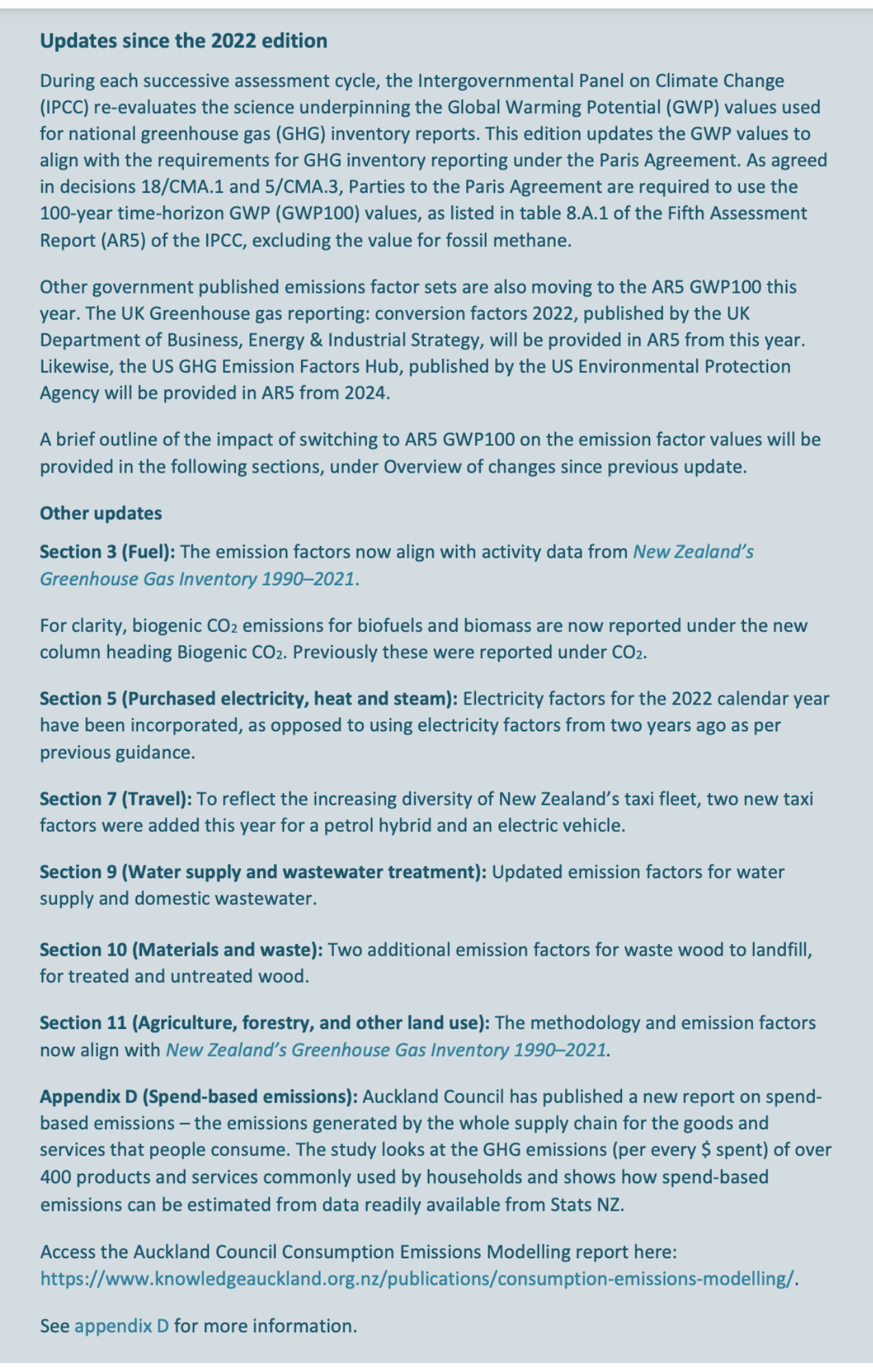MfE’s 2023 Emission Factors
Our Overview of the Updated Ministry for the Environment Guide to Measuring Emissions
What has happened?
In July the Ministry for the Environment published its 2023 guide for organisations wishing to voluntarily measure and report their greenhouse gas (carbon) emissions. The full version is available online.
Why is this important?
This MfE guide is the primary source of emission factors for Scope 1, Scope 2, and a selection of Scope 3 emission factors for Aotearoa New Zealand. Emission factors are an integral part of measuring carbon footprints as they are used to quantify the environmental impact of products and activities. It is also used to translate the various pollutants into tonnes of carbon dioxide equivalent (tCO2e), which is the reporting unit specified by the GHG Protocol and ISO 14064-1.
Put simply:
Activity Data x Emission Factor = Tonnes of Carbon Dioxide Equivalent
New Zealand’s Ministry for the Environment, just like other governmental organisations that are tasked with setting emission factors for their countries and regions, regularly re-evaluate the science on which emissions factors are based, and update them accordingly.
What are the key changes?
As a signatory of the Paris Agreement New Zealand is required to use the emissions factor values that take into consideration the 100-year time-horizon of the pollutants' Global Warming Potential (GWP100). This has been updated in the 2023 edition and has an effect on a number of sections:
Fuel: Emission factors now align with NZ's Greenhouse Gas Inventory 1990-2021;
Purchased electricity, heat and steam: 2022 electricity factors have been included;
Travel: Two new taxi factors introduced (petrol hybrid and electric);
Water supply and wastewater treatment: Updated emission factors for water supply and domestic wastewater;
Materials and waste: Introduced emissions factors for treated and untreated wood to landfill;
Agriculture forestry, and other land use: Emission factors now align with NZ's Greenhouse Gas Inventory 1990-2021;
Spend-based emissions: The Auckland Council Consumption Emissions Modelling report gives guidance on GHG emissions per $ spent on over 400 products and services. See our article on The Issue of Spend-Based Emission Factors for our take on this.
Page 9 of MfE's guide, outlining the changes to the previous edition.
What does this mean for my organisation?
An organisation should always select emission factors that align with their measurement period, so for 2023 inventories the updated factors need to be applied.
However, the changes to emission factors are material. This means that in order to make a meaningful comparison of emissions over time a recalculation of previous inventories may be required in a number of situations:
If significant quantities of refrigerant gases are lost to the atmosphere, then you should recalculate previous inventories using the updated GWPs.
If electricity emission is significant to an inventory, then the 2022 measurement period using the 2022 emission factor needs to be recalculated. This replaces the 2020 factor and will be a material decrease in emissions for many reporters.
If swine or poultry emissions are significant, then a recalculation of previous inventories using the updated emission factor will be necessary, as the previous factors published for all years included an error.
What does this mean for assurance?
McHugh & Shaw or another assurance provider will review the selection and justification for emission factors during the assurance process. We will then assess the impact of the emission factor changes on the inventory, including the previous reporting periods.
There may be situations where a measurement software provider cannot update emission factors before the assurance work is completed, and this will be noted in the final assurance statement issued.
Last updated September 2023


